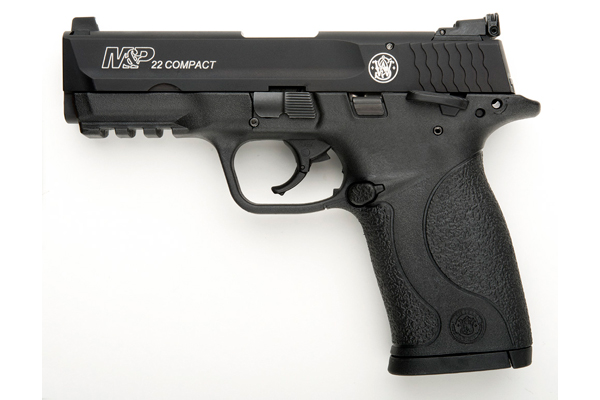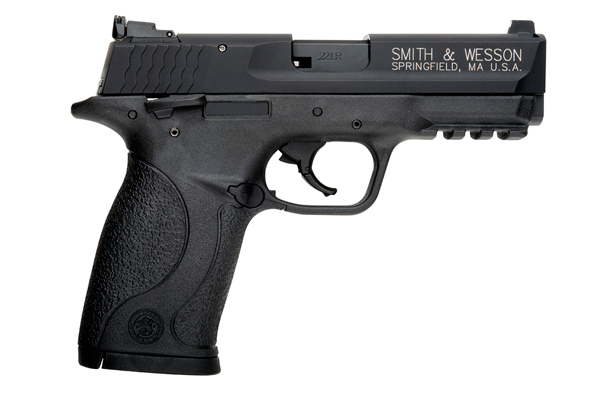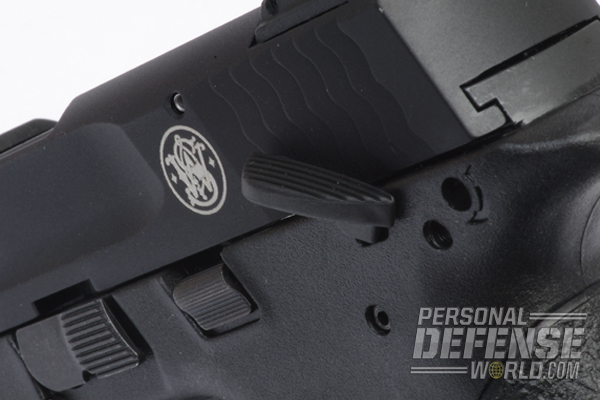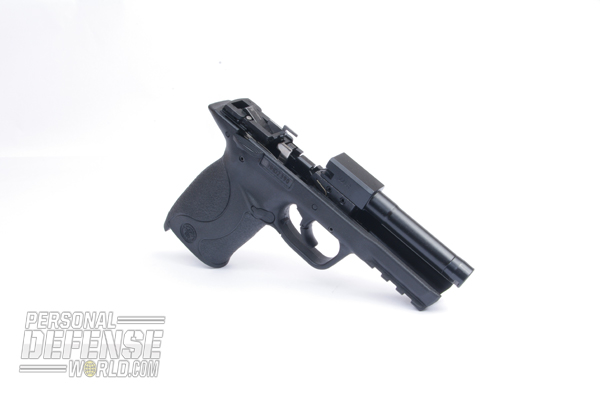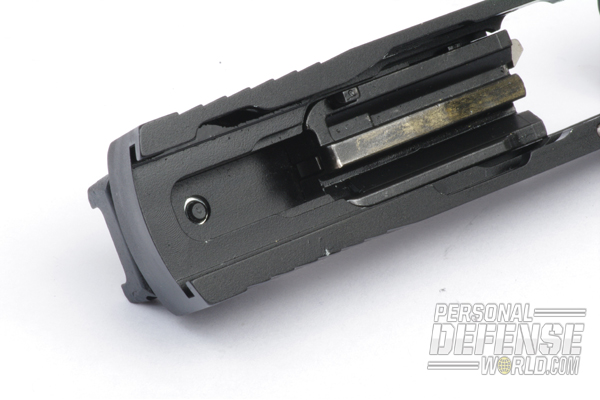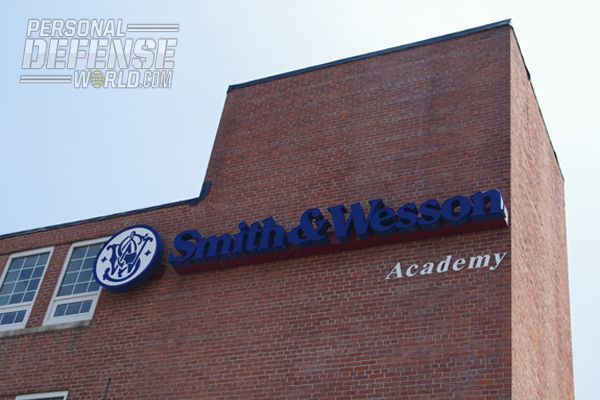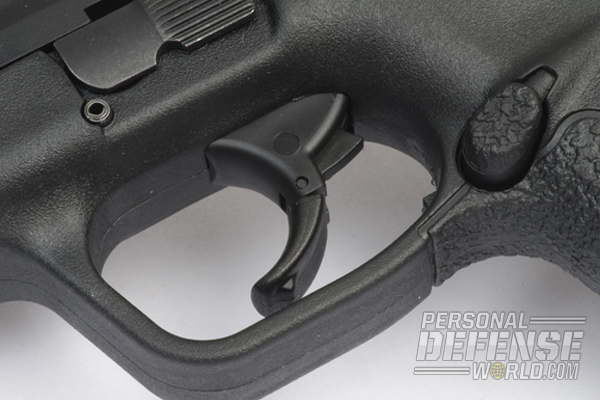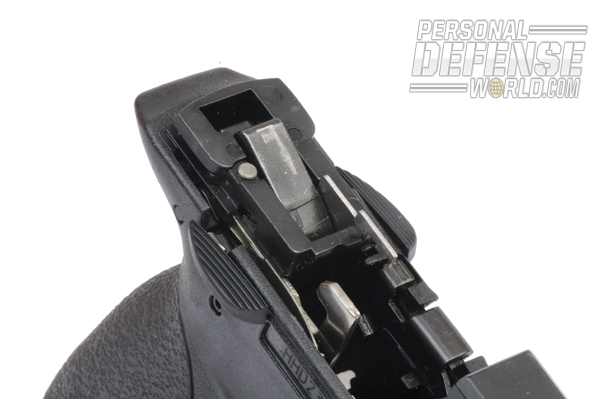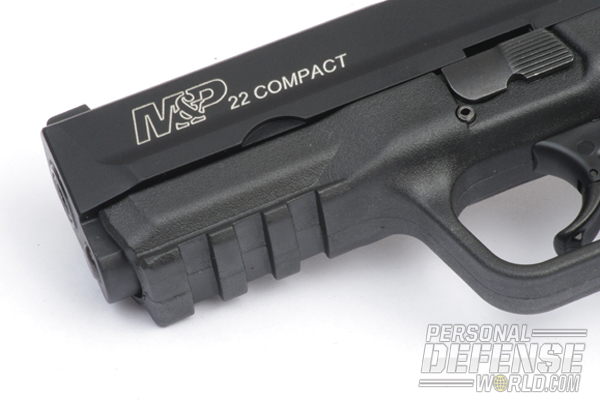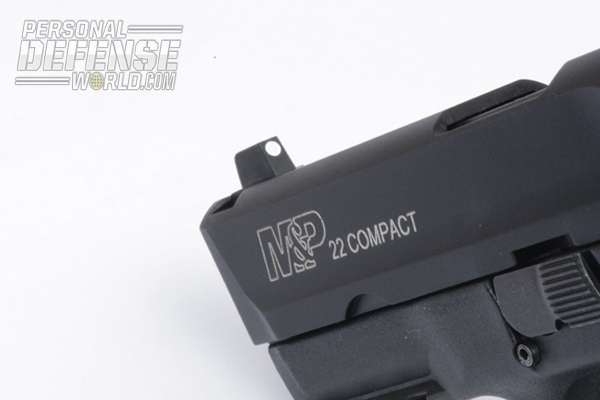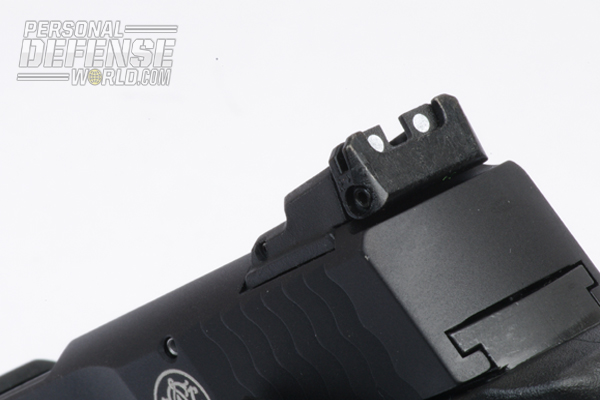Sometimes, less is more. At least it is in the case of the new rimfire .22 LR M&P22 Compact from Smith & Wesson. Recently, COMBAT HANDGUNS had the chance to attend a pre-release event on this new pistol at the Smith & Wesson headquarters in Springfield, Massachusetts. Splitting our time between the factory and the Smith & Wesson Academy facility, we had a chance to not only go hands on with the new pistol, but also learn about the manufacturing processes behind it.
The pistol itself is unique. Rather than being a 1-to-1 scale version of the full-size pistol, the new M&P22 Compact is sized down to an 87.5-percent scale of the 9mm/.40 M&P series. The result is a pistol that visually appears to be the same as the standard but is more svelte and compact in the hand. In fact, the only thing that is not to the 87.5-percent scale on the pistol is (for obvious reasons) the strip of Picatinny rail on the dust cover.
From a handling standpoint, the new pistol operates exactly as does a standard M&P semi-auto. Anyone familiar with the operation of the regular M&P will be right at home with the M&P22 Compact. The pistol features the hinged trigger that helps prevent unintentional discharges by requiring the trigger to be pressed for it to fire. The magazine catch is reversible, and the grip angle is the same as the full-size models. It is from a mechanical standpoint that the differences between the designs manifest themselves.
Advertisement — Continue Reading Below
First and foremost, the M&P22 Compact is a hammer-fired single action rather than a double-action-only, striker-fired system like the standard M&P semi-auto. The trigger pull on my test pistol measured in at a 5.5 pounds. As a result of the pistol being a single action, it comes standard with an ambidextrous safety (as is available as an option on the standard centerfire pistol). The safety is located at the rear of the frame, and operates much like that of a 1911’s. In addition to the manual safety and the trigger safety, the pistol features a magazine safety, a trigger-activated firing pin block and an internal lock for manually locking the action of the pistol.
As you would guess, the pistol is a straight-blowback design due to its chambering, relying on a combination of slide mass and spring pressure to keep the action closed long enough for chamber pressures to drop to safe levels before cycling. The barrel (which features a threaded section covered by a cap) is fixed to the frame, and a captured recoil guide rod/spring assembly is located beneath it. Disassembly also differs from the standard pistol: You simply lock the slide back, rotate the takedown lever and then pull back the slide, lifting it up and over to remove. The frame does not feature interchangeable backstrap panels, and the aluminum alloy slide is topped off with adjustable sights.
After a full tour of the facility and some insight into the development and production of the new pistol, we were able to go over to the academy and run a few hundred rounds through our pistols through a mini low-light IDPA-style course set up by none other than renowned competitive shooter Tom Yost. The pistol proved to be accurate and a pleasure to shoot. There were some initial hiccups in functioning during the break-in period, but once we ran it a bit and determined its preferred loadings, it ran like a top. For more information, visit smith-wesson.com, and keep an eye out for a full test and review of the M&P22 Compact in a future issue of COMBAT HANDGUNS. To subscribe, visit
Advertisement — Continue Reading Below
Specifications
* CALIBER: .22 LR
* BARREL: 3.56 inches
* OA LENGTH: 6.65 inches
* WEIGHT: 15.3 ounces (empty)
* GRIPS: Polymer
* SIGHTS: Adjustable
* ACTION: SA
* FINISH: Black, hard-coat anodize
* CAPACITY: 10+1
* MSRP: $389
